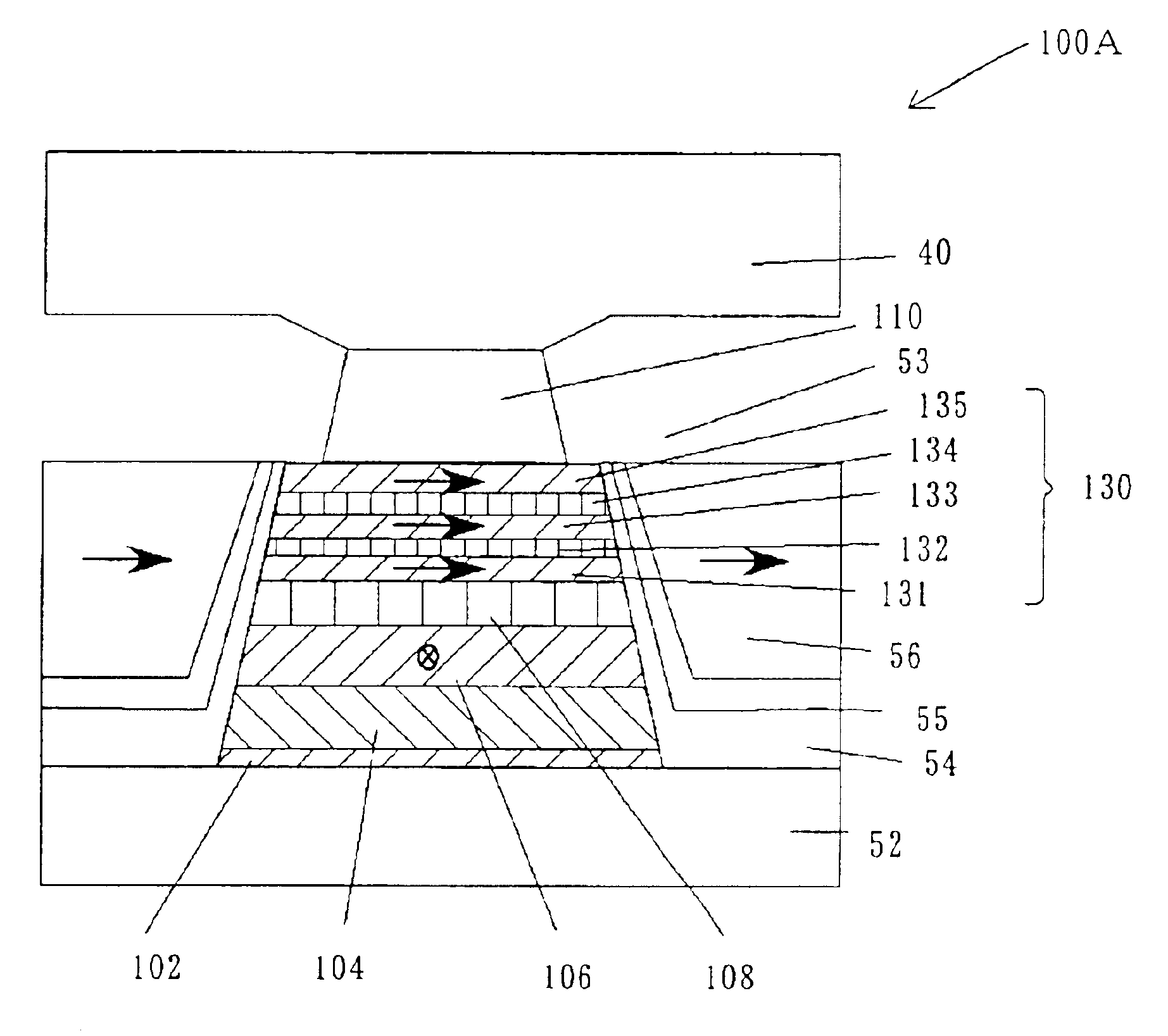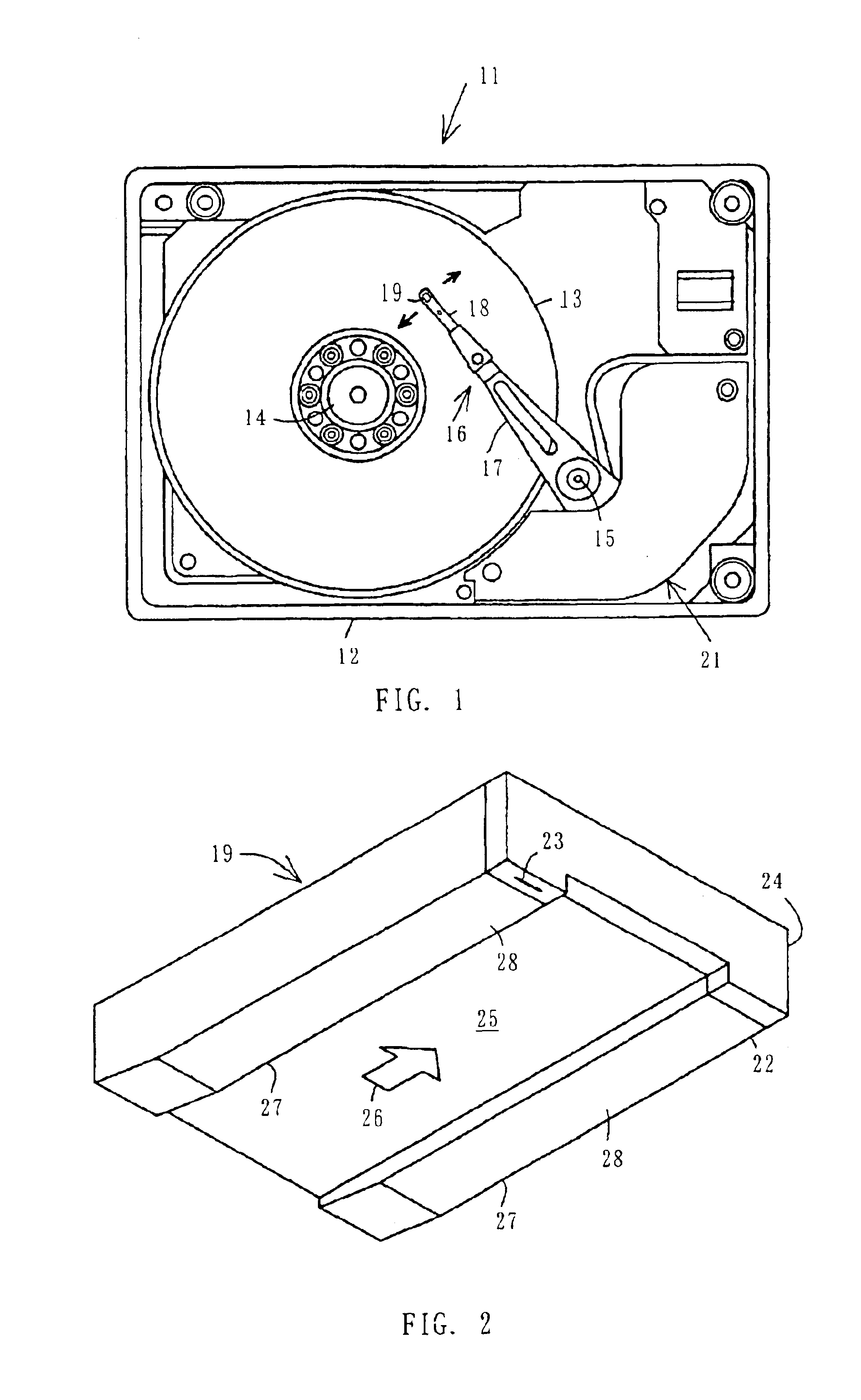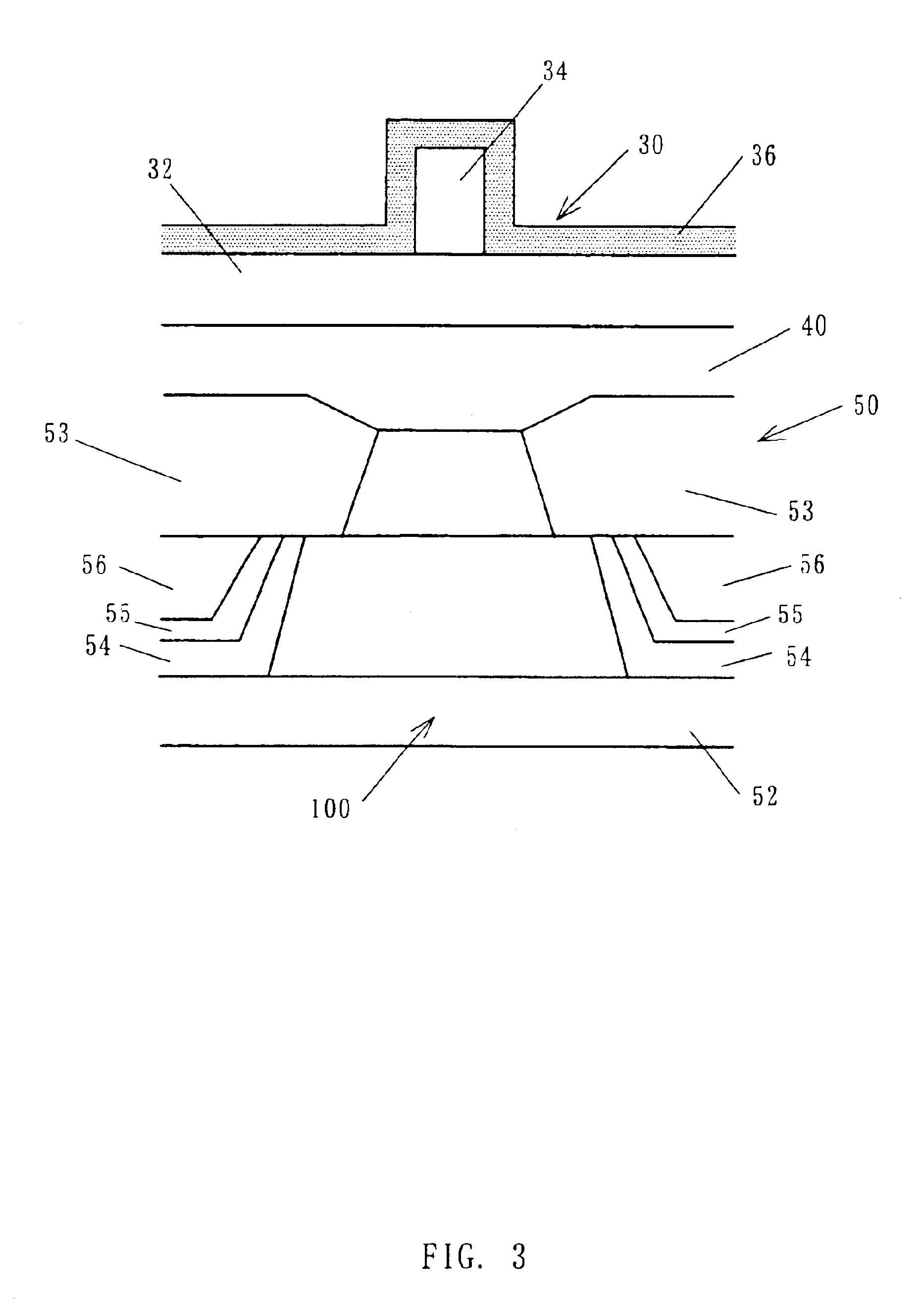CPP GMR free layer having ferromagnetic layers with parallel magnetization separated by non-magnetic layer
- Summary
- Abstract
- Description
- Claims
- Application Information
AI Technical Summary
Benefits of technology
Problems solved by technology
Method used
Image
Examples
example 1
[0059]As shown in FIG. 5, there is formed a bottom spin-valve film 100 of a first embodiment according to the present invention. Here, FIG. 5 is an enlarged sectional view of the spin-valve film 100 applicable to a structure shown in FIG. 3. Laminated, in order from down to up, on the lower shield-lower electrode layer 52 are the primary coat layer 102 that includes the layer made of Ta with a layer thickness of 5 nm and the layer made of NiFe with a layer thickness of 2 nm, the exchange-coupling layer 104 made of PdPtMn with a layer thickness of 15 nm, the pinned ferromagnetic layer 106 made of CoFeB with a layer thickness of 3 nm, the non-magnetic intermediate layer 108 made of Cu with a layer thickness of 4 nm, a free ferromagnetic layer 120 with a layer thickness of 5 nm, and the electrode 110 that includes the layer made of Cu with a layer thickness of 1 nm, and the layer made of Au with a layer thickness of 10 nm.
[0060]The free ferromagnetic layer 120 includes a first free fer...
example 2
[0061]As shown in FIG. 6, there is formed a bottom spin-valve film 100A of a second embodiment according to the present invention. Here, FIG. 6 is an enlarged sectional view of the spin-valve film 100A applicable to a structure shown in FIG. 3. Laminated, in order from down to up, on the lower shield-lower electrode layer 52 are the primary coat layer 102 that includes the layer made of Ta with a layer thickness of 5 nm and the layer made of NiFe with a layer thickness of 2 nm, the exchange-coupling layer 104 made of PdPtMn with a layer thickness of 15 nm, the pinned ferromagnetic layer 106 made of CoFeB with a layer thickness of 3 nm, the non-magnetic intermediate layer 108 made of Cu with a layer thickness of 4 nm, a free ferromagnetic layer 130 with a layer thickness of 7 nm, and the electrode 110 that includes the layer made of Cu with a layer thickness of 1 nm, and the layer made of Au with a layer thickness of 10 nm.
[0062]The free ferromagnetic layer 130 includes a ferromagnet...
example 3
[0064]As shown in FIG. 7, there is formed a bottom spin-valve film 100B having a synthetic ferri structure of a third embodiment according to the present invention. Here, FIG. 7 is an enlarged sectional view of the spin-valve film 100B applicable to a structure shown in FIG. 3. Laminated, in order from down to up, on the lower shield-lower electrode layer 52 are the primary coat layer 102 that includes the layer made of Ta with a layer thickness of 5 nm and the layer made of NiFe with a layer thickness of 2 nm, the exchange-coupling layer 104 made of PdPtMn with a layer thickness of 15 nm, the pinned ferromagnetic layer 140 having the synthetic fern structure with a layer thickness of 7.8 nm, the non-magnetic intermediate layer 108 made of Cu with a layer thickness of 4 nm, the free ferromagnetic layer 120 with a layer thickness of 5 nm, and the electrode 110 that includes the layer made of Cu with a layer thickness of 1 nm, and the layer made of Au with a layer thickness of 10 nm.
[...
PUM
 Login to View More
Login to View More Abstract
Description
Claims
Application Information
 Login to View More
Login to View More - R&D
- Intellectual Property
- Life Sciences
- Materials
- Tech Scout
- Unparalleled Data Quality
- Higher Quality Content
- 60% Fewer Hallucinations
Browse by: Latest US Patents, China's latest patents, Technical Efficacy Thesaurus, Application Domain, Technology Topic, Popular Technical Reports.
© 2025 PatSnap. All rights reserved.Legal|Privacy policy|Modern Slavery Act Transparency Statement|Sitemap|About US| Contact US: help@patsnap.com



